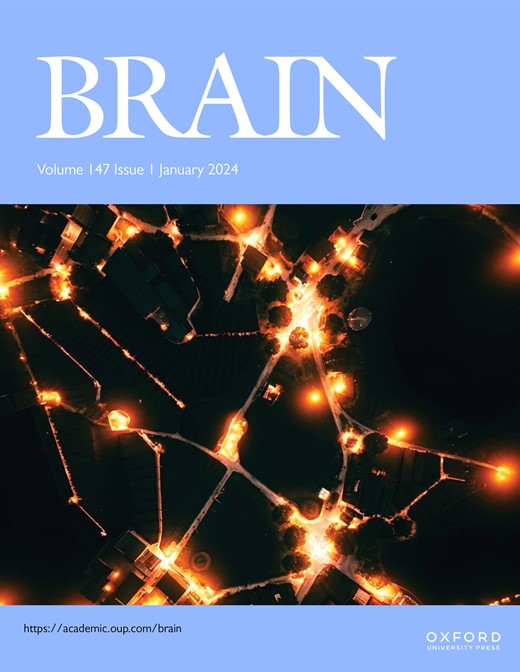通过高尔基体n端乙酰化了解脑钙化
IF 10.6
1区 医学
Q1 CLINICAL NEUROLOGY
引用次数: 0
摘要
原发性家族性脑钙化(PFBC)为脑钙化机制提供了有价值的见解,因为它挑出了可能参与相关细胞途径的蛋白质。到目前为止,已经有7个基因与PFBC有关,研究它们的编码蛋白标志着了解这种疾病机制的一个令人兴奋的新时代,这可能最终导致预防脑钙化的治疗策略。由于致病变异,每发现一个与PFBC相关的新基因,都达到了一个额外的理解水平。在这里,我们强调了最近发现的PFBC基因,编码高尔基定位的n端乙酰转移酶NAA60。我们探索从这种酶的分子、细胞和生理特性的理解中获得的新观点。有趣的是,NAA60与最常见的PFBC基因SLC20A2共享关键作用。这两种蛋白质似乎都参与维持高尔基体的结构完整性,因为任何一种蛋白质的缺乏都会导致高尔基体断裂。因此,高尔基体形态改变正在成为PFBC研究中的一个新的重要课题,我们在此讨论这一课题与高尔基体重排和功能障碍作为神经退行性疾病因素的现有知识的关系。本文章由计算机程序翻译,如有差异,请以英文原文为准。
Understanding brain calcification via N-terminal acetylation at the Golgi apparatus
Primary familial brain calcification (PFBC) provides valuable insights into the mechanisms underlying brain calcification as it singles out the proteins that potentially are involved in the relevant cellular pathways. To date, seven genes have been linked to PFBC, and studying their encoded proteins marks an exciting new era in understanding the disease mechanisms, which may ultimately lead to therapeutic strategies to prevent brain calcification. With each new gene found to be associated with PFBC due to pathogenic variants, an additional level of understanding is achieved. Here, we highlight the most recently discovered PFBC gene, encoding the Golgi-localized N-terminal acetyltransferase NAA60. We explore the novel perspectives gained from the understanding of this enzyme’s molecular, cellular and physiological properties. Interestingly, NAA60 shares a critical role with the most frequent PFBC gene, SLC20A2. Both these proteins seem to be involved in maintaining the structural integrity of the Golgi apparatus, as deficiency in either protein leads to Golgi fragmentation. Altered Golgi morphology is therefore emerging as a new significant topic in PFBC research, and we here discuss this topic in relation to existing knowledge regarding Golgi rearrangements and dysfunction as a factor in neurodegenerative diseases.
求助全文
通过发布文献求助,成功后即可免费获取论文全文。
去求助
来源期刊

Brain
医学-临床神经学
CiteScore
20.30
自引率
4.10%
发文量
458
审稿时长
3-6 weeks
期刊介绍:
Brain, a journal focused on clinical neurology and translational neuroscience, has been publishing landmark papers since 1878. The journal aims to expand its scope by including studies that shed light on disease mechanisms and conducting innovative clinical trials for brain disorders. With a wide range of topics covered, the Editorial Board represents the international readership and diverse coverage of the journal. Accepted articles are promptly posted online, typically within a few weeks of acceptance. As of 2022, Brain holds an impressive impact factor of 14.5, according to the Journal Citation Reports.
 求助内容:
求助内容: 应助结果提醒方式:
应助结果提醒方式:


